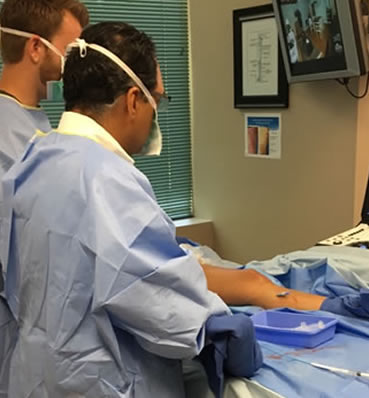
Saturday and Sunday - CLOSED

Longwood, Fl 32779

Heart Vein & Vascular is pleased to be among the first in Central Florida to offer the new FDA approved ‘Venaseal procedure’, as an alternative to the surgical procedures for varicose veins and venous insufficiency. Venaseal is an injectable adhesive which treats the underlying source of varicose veins. If you have visible varicose veins or unsightly spider veins in your thigh or leg, the Venaseal procedure may be a good alternative to other varicose vein treatment options available at HVV.
In addition to being unsightly, varicose and spider veins can cause physical discomfort. Patients can report itching, heaviness, stinging, burning, throbbing, swelling, skin changes including leg ulcers, night cramps and restless legs. These symptoms and complications come from pooled or trapped blood in your leg veins.
At your initial consultation, we will evaluate your legs to determine if you are a candidate for the Venaseal procedure or if another procedure would be better for your unique needs. Our staff will then schedule a treatment appointment and provide you with instructions about what you should do or avoid prior to your treatment based on your health.
Click HERE to “See VenaSeal™ as featured on ‘The Dr. Oz Show’”
What to Expect
Before the VenaSeal™ Closure Procedure:
You will have an ultrasound imaging exam of the leg that is to be treated. This exam is important for assessing the diseased superficial vein and planning the procedure.
During the Procedure:
Your doctor can discuss the procedure with you. A brief summary of what to expect is below:
After the Procedure:
You will be taken to the recovery area to rest. Your doctor will discuss with you what observations will be performed following treatment.
Potential Risks:
The VenaSeal procedure is minimally invasive and catheter-based. As such, it may involve the following risks. Your doctor can help you understand these risks.
Copyright 2024. All rights reserved.

Saturday and Sunday - CLOSED

Longwood, Fl 32779